Woven Pixels
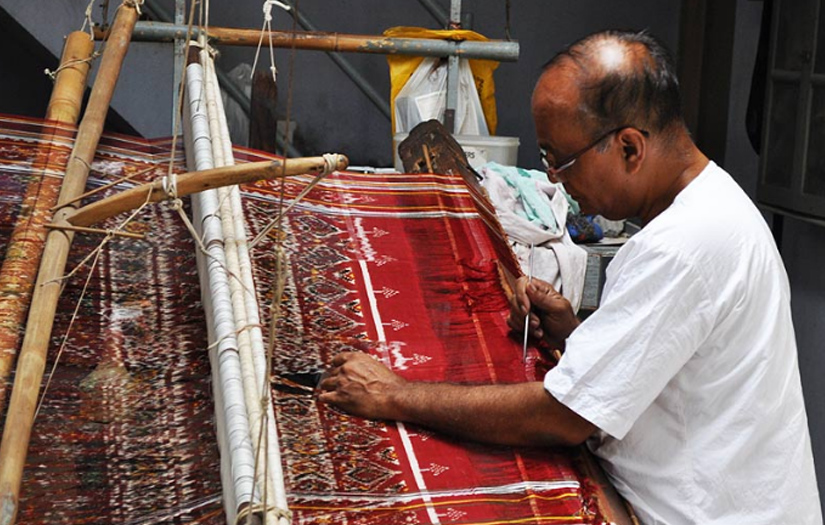
A precious piece of heirloom, passed down through generations and preserved to be brought out only for the most important occasions, the Patolu, or Patola is one of the most prized and valued textiles. (As described in the earlier post on “Patola” ) It is revered not just for its religious significance across many faiths, but also for the amazing level of skill and perseverance required to make it.
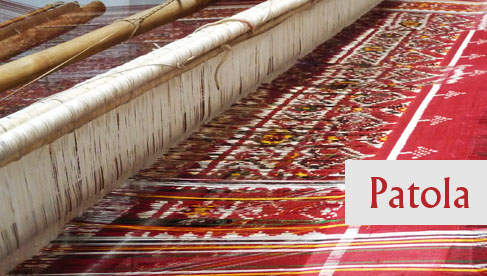
Patan Patola Weaving process
The first step in making a patolu is tying of the yarn with cotton thread according to the pattern. The tying of yarns is an intricate and time – consuming process, with measurements as small as 1/100th of an inch. The yarn undergoes multiple cycles of tying and dyeing, following a specific order of colors. The yarns have to be carefully arranged during and after dying, as displacement of even a single yarn can disturb the design arrangement and render the entire set of yarns useless.
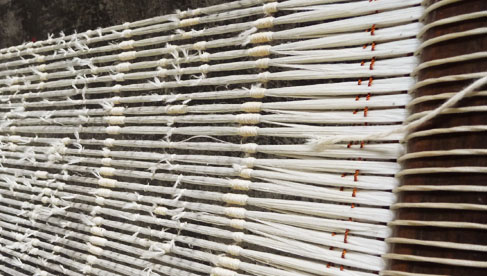
Post dyeing, the yarns are stretched out to make the warp. This requires the presence of a master craftsman, as repairing the broken threads and arranging the warp requires a great deal of experience.
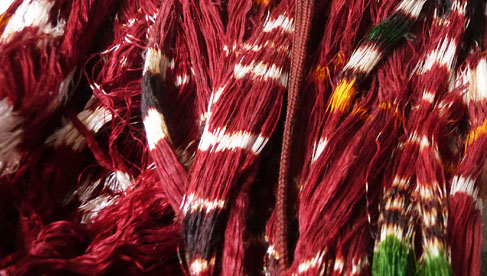
The patola loom is one of its kind in many ways. It is tilted to one side and requires two people to sit and work together on one sari. The rosewood sword shaped stick called “Vi”, which is used for adjusting the yarns, is also found only with the Patola loom, and the Salvis get their name from this.
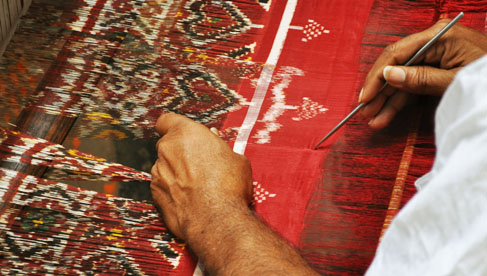
Weaving a Patola sari requires immense amount of precision and patience. Every colour in every yarn has its own unique place in the sari and it has to be carefully aligned with the pattern while weaving. After every few inches of weaving, the design is adjusted using steel needles. A close view of Patola weaving shows the intricacy of the design with each of the thread having its own place in the fabric. Two people have to work together on the Patola loom and it can take 6 months to a year, or even more, to make one Patola sari.
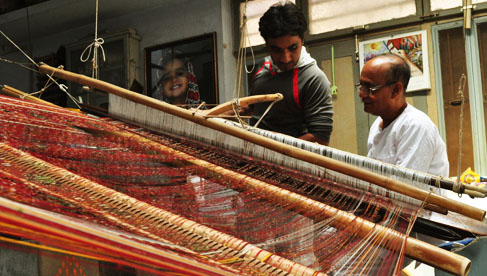
Patan patola weaving process
Each of the motifs and colours have different significance in different communities. For example, the Vohra Gaji Bhaat is a favourite motif among the Vohra community, who are Ismaeli Shi’ite Muslims. Compared with other forms, it shows little variation in the ever-repeated design structure. The Jains prefer abstract and geometric motifs.
The elephant (kunjar), flower (phul), girl (nari) and parrot (popat) designs are very common in Patola saris worn by Gujarati women and the elephant and tiger motifs are considered particularly auspicious. The Pan Bhaat (Leaf Design) is one of the most frequent patterns. It is a motif indigenous to India and can be traced back as far as the pottery of the Indus Valley culture.
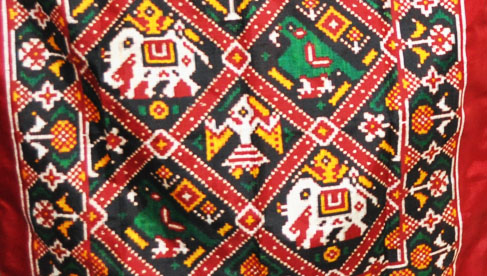
Today, there are only four existing Patola-making families striving to save the craft in the face of many threats – high investment of time and money, low returns, and lack of interest for continuing the craft among the younger generations. And even though the craftsmen are packed with orders for the next couple of years, there aren’t any new people taking up this profession.
The market is full of cheaper, single ikat Patola imitations which are diluting Patola’s identity. Also, with jarring chemical dyes becoming more popular than natural dyes, and the motifs becoming less intricate, there are very few heirloom pieces left which carry the true essence of Patola.
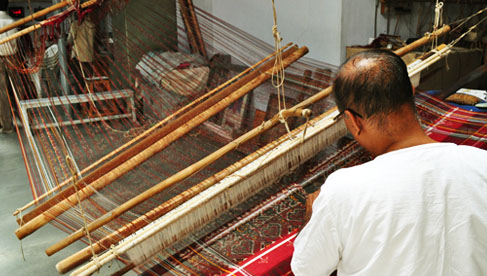
This craft now depends solely on the few patrons who appreciate the value of painstaking efforts, time and extraordinary precision in the hands of master craftsmen who are truly a treasure in our culture of age old crafts.
Read in detail ~ Gaatha.org
Buy Patola online ~ Shop.gaatha.com
~

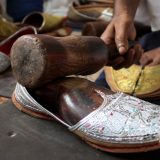
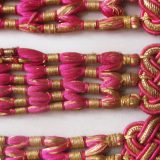







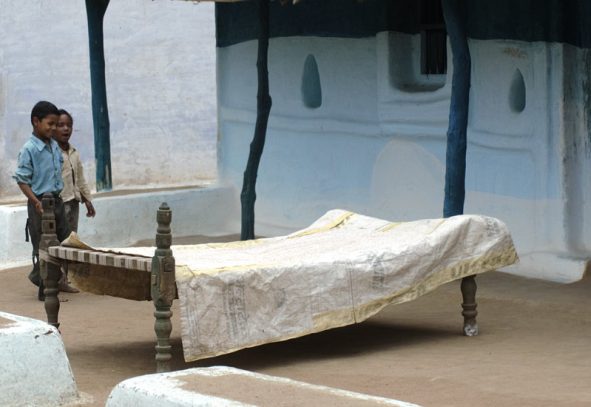
Prerna
Great respect for the families still holding onto the craft. Being a design professional and craft enthusiast, it pains to see such beautiful creation going on the verge of getting extinct. I hope the young would understand the value of such rich craft culture prevailing in india. And measures being taken to save and cherish it.
snehasri
nice blog
wedding sarees online | salwar kameez online | sarees online shopping | buy indian sarees online | saree manufacturers | cotton sarees online
Humera ansari
Nice blog, thatnks to share such a good information.
Now people will understand hand work that much not easy.
Thanks for your effort!!